Premium Only Content
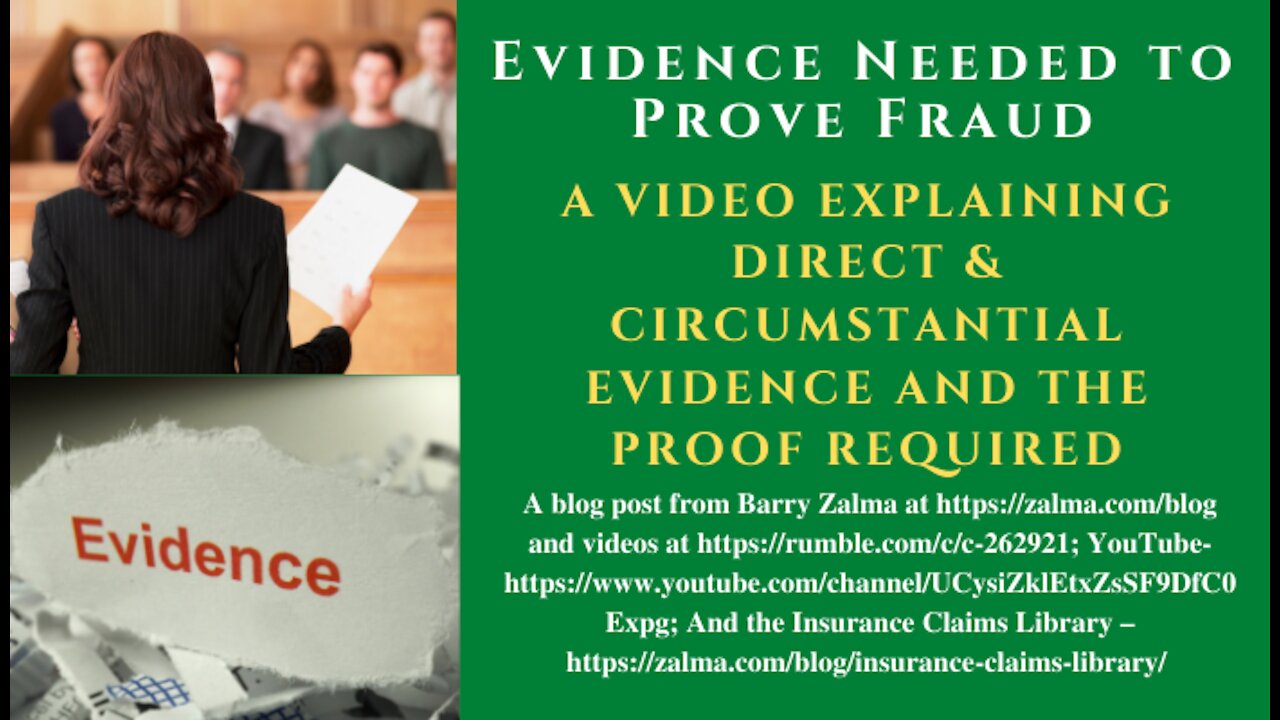
Evidence Needed to Prove Fraud
A Video Explaining Direct & Circumstantial Evidence and The Proof Required
A Video Explaining Direct & Circumstantial Evidence and The Proof Required
To properly prepare a case for trial an adjuster or SIU investigator must understand evidence and that evidence is broken into two major categories: direct and circumstantial.
Direct Evidence
Direct evidence is proof that tends to show existence of a fact in question without the intervention of the proof of any fact. It includes testimony that tends to prove or disprove a fact in issue directly, such as eye-witness testimony or a confession.
Sometimes, direct evidence may not exist because records have been destroyed in a fire, destroyed by water, stolen, discarded, or eaten by vermin.
As important as direct evidence is to the proof of fraud or attempted fraud, courts have noted that it can be difficult to obtain direct evidence of something so internal as intent to commit fraud. [United States v. Washington, 715 F.3d 975, 980 (6th Cir. 2013)]. Jurors are therefore free to consider circumstantial evidence and draw reasonable inferences from it. In United States v. Hawkins (6th Cir., 2019) circumstantial evidence was sufficient to allow a jury to convict. Courts are often called upon to rule what direct evidence may be admitted. In one case the Government was allowed to introduce tax evidence, the asset transfer evidence and the 'salacious acts' evidence as direct evidence to prove a crime. In addition, the Government was allowed to introduce, under Rule 404(b), evidence concerning Mr. Brooks' alleged insurance fraud and the stock purchases by Mr. Brooks' family members. [United States v. Hatfield, 685 F.Supp.2d 320 (E.D. N.Y. 2010)]
A court stated it was mindful that there was no direct evidence that any of the plaintiffs here knowingly participated in any insurance fraud scheme, or even suspected one. But where a loss is caused by the fraud of a third party, in determining the liability as between two innocent parties, the loss should fall on the one who enabled the fraud to be committed. [Fidelity Natl. Tit. Ins. Co. of N.Y. v Consumer Home Mtge., 272 AD2d 512, 514 [2d Dept 2000].] Although any fraudulent conduct of the assignors might not be "properly imputed" to plaintiffs plaintiffs would be among the primary beneficiaries of the fraud [Chubb & Son v Consoli, 283 AD2d 297, 299 [1st Dept 2001]). [A.B. Med. Servs v. State Farm, 7 Misc.3d 822, 795 N.Y.S.2d 843, 2005 NY Slip Op 25089 (N.Y. Civ. Ct. 2005)]
Circumstantial Evidence
If direct evidence does not exist for any reason, circumstantial evidence must be produced to prove the fraud. It is direct evidence if a witness sees a jet plane fly across the sky and it is circumstantial evidence if the witness sees a jet's contrail but not the jet itself. [People v. Rios (Cal. App. 2015)]
Circumstantial evidence is all evidence of an indirect nature when the existence of the principal fact is deduced from evidentiary facts by a process of probability reasoning. The investigator takes circumstantial evidence and uses deductive reasoning to reach a conclusion. Circumstantial evidence and the deductions of a professional investigator are often more reliable than direct evidence like eye-witness testimony. Circumstantial evidence is sufficient to establish proof of arson and other criminal activities. [Hoosier Insurance Company, Inc. v. Mangino, 419 N.E. 2d 978, 986 (Ind. App. 1981)].
Many fraud cases are proved entirely by circumstantial evidence, or by a combination of circumstantial and direct evidence, but seldom by direct evidence alone. Fraudulent intent, the most difficult element to prove in many fraud cases, is usually proven circumstantially, and necessarily so, because it is impossible to produce direct evidence of the defendant’s state of mind, absent a confession or the testimony of a co-conspirator.
In a circumstantial case, the court may instruct the jury that the prosecution or the insurer must exclude all inference from the facts other than its determination of fraud. If the trier of fact can infer a legitimate rather than fraudulent explanation for a series of events, the insurer’s defense or the prosecution will fail. Even if no such instruction is given, the investigator and adjuster should apply the same standard when preparing a circumstantial case for trial.
Occasionally, as in the Indiana case of Hicks v. State of Indiana, 510 N.E. 2d 676 (1987), a thief will attempt to defeat a burglary claim by claiming it was part of an insurance fraud scheme. If the victim instigated the crime as part of an insurance fraud, there can be no conviction of burglary. However, adjusters, like the prosecutor in the Hicks case, should be leery of such “confessions” as they may often be fabricated. An insured should never be accused of fraud based on an accused felon’s statement unless independent, innocent witnesses corroborate the felon’s charges.
"Clear and Convincing” Standard of Evidence
© 2021 – Barry Zalma
-
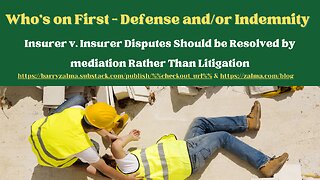 10:17
10:17
Barry Zalma, Inc. on Insurance Law
1 year agoWho's on First - Defense and/or Indemnity
196 -
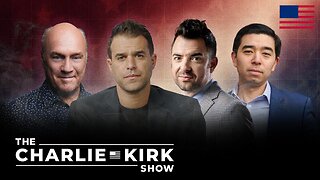 LIVE
LIVE
The Charlie Kirk Show
1 hour agoOnward | Henderson, Laurie, Miles | 11.5.2025
4,219 watching -

Steven Crowder
4 hours agoWho is the Real Myron Gaines | Ash Wednesday
235K194 -
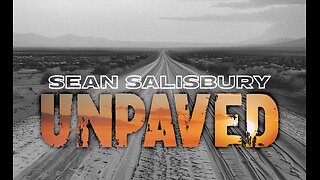 LIVE
LIVE
Sean Unpaved
42 minutes agoRankings, Recaps, & Deadline Deals: CFB Shake-Ups & NFL Trades
809 watching -
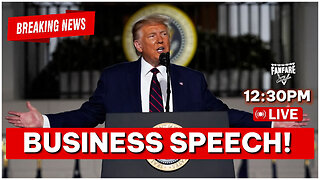 LIVE
LIVE
Barry Cunningham
2 hours agoBREAKING NEWS: PRESIDENT TRUMP SPEECH AT THE MIAMI BUSINESS FORUM! (MIKE JOHNSON PRESSER)
1,744 watching -
 LIVE
LIVE
Side Scrollers Podcast
2 hours agoAsmongold SUED for Emotional Distress + Hasan REJECTED+ INSANE Plane Crash + More | Side Scrollers
740 watching -
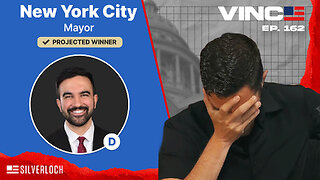 1:00:32
1:00:32
VINCE
5 hours agoNYC Has Been Seized By The Communists | Episode 162 - 11/05/25
202K279 -
 1:47:26
1:47:26
LadyDesireeMusic
2 hours agoLive Piano & Convo Rumble Rants/ Subs to Request
7.96K2 -
 LIVE
LIVE
SOLTEKGG
3 hours agoGOING FOR KILL RECORD - BF6 SKIN Giveaway
60 watching -
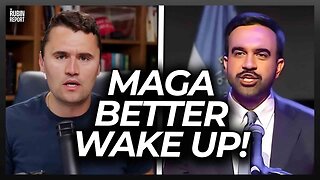 1:04:48
1:04:48
The Rubin Report
3 hours agoCharlie Kirk’s Warning for MAGA if Mamdani Won
36.7K112